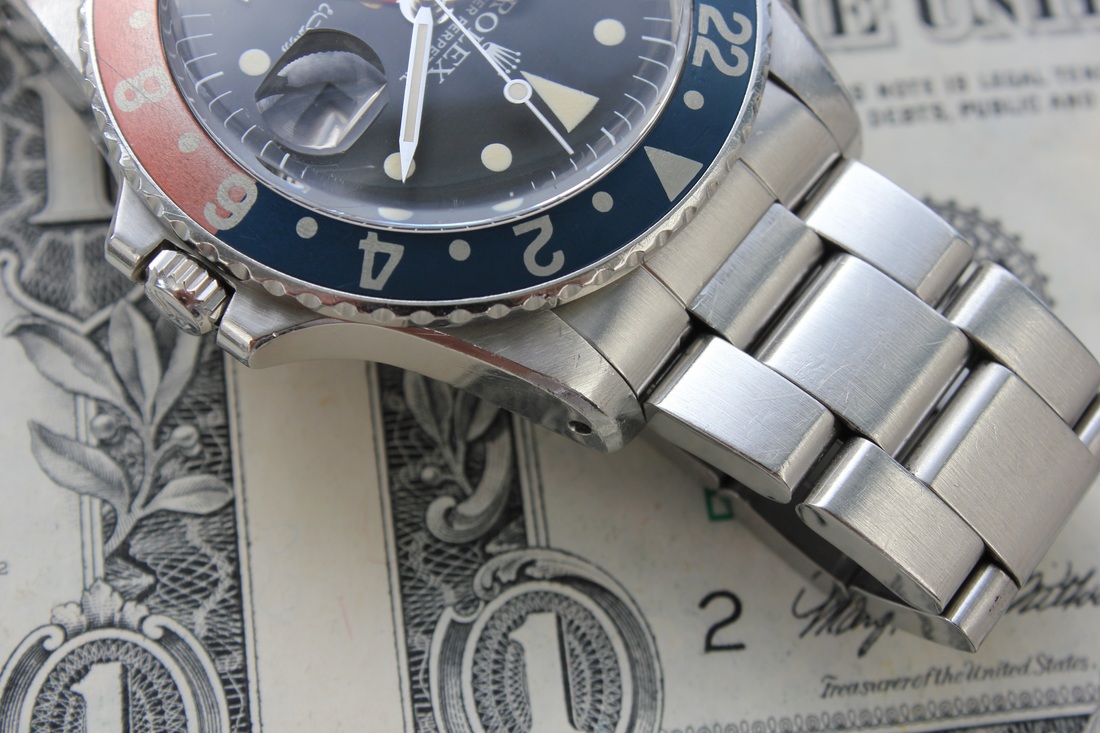Case Dimensions: Source
- Width: 39 mm
- Lug Width: 20 mm
- Lug to lug length: 47.5 mm
- Thickness (case back to plexi)
- 1959 – 1967: 12.7 mm (thin case)
- 1967 – 1979: 13.0 mm (standard case)
Case Engravings: The engravings on the 1675 evolve in a similar pattern to those on the 1016 Explorer. The model and serial number engravings are located between the lugs. The model number is engraved between the top lugs above the 12 o’clock and the serial number between the bottom lugs below the 6 o’clock. There are four variations that occur across the 1675s model run:
- SN 5xx,xxx – 695,xxx (1959-60): In these early examples, the top position has “1675” on the first line and “REGISTERED DESIGN” on the second line. The bottom position has the serial number on the first line and the second line is either blank or has “STAINLESS STEEL”.
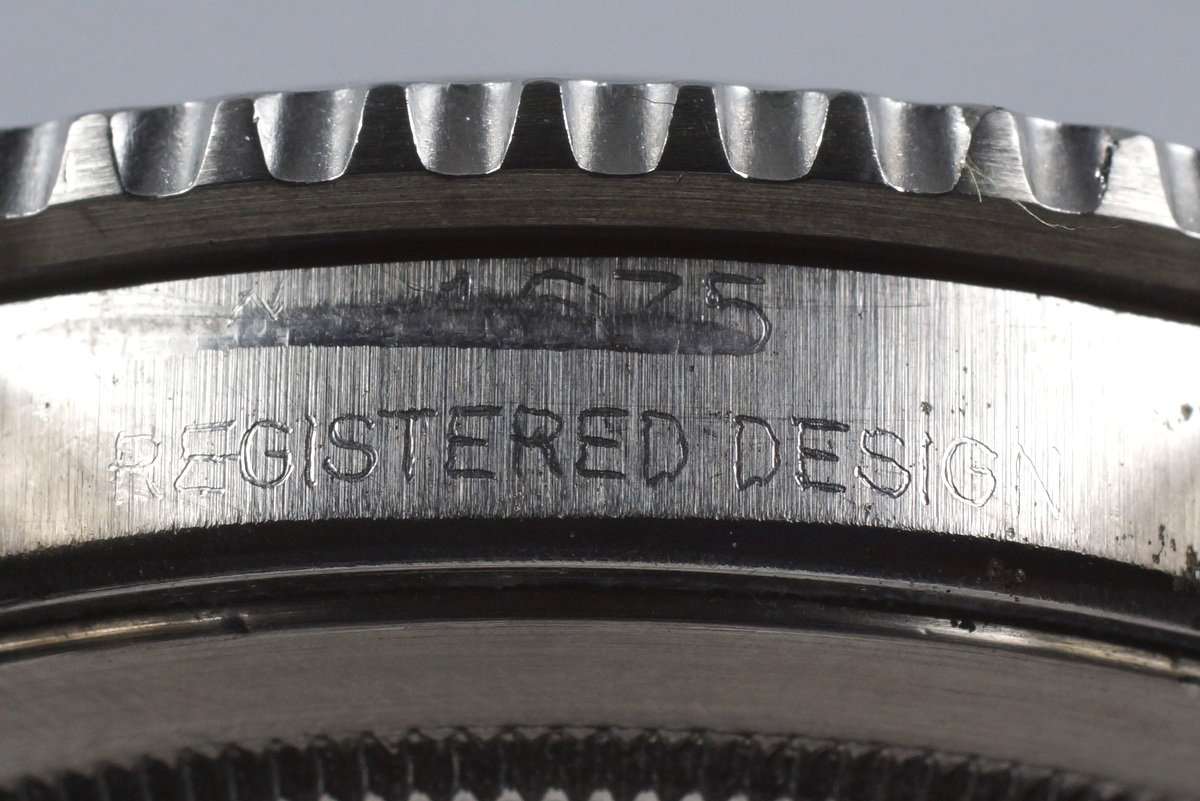

- SN 695,xxx (1960) – 2,8xx,xxx (1970): In this “standard 1960s” engraving, the top position has “REGISTERED DESIGN” on the first line and “1675” on the second line. The bottom position has either a blank top line or “STAINLESS STEEL” and the serial number on the second line. So far, there is not a clear pattern to the 1960s watches having the “STAINLESS STEEL” engraving or a blank space. Both are seen throughout the early and later 1960’s, within the same serial batches, and with both fonts types (see below). I don’t have a good enough sample to determine if these vary by country of delivery, which is another possibility.




- SN 2,9xx,xxx (1971) – 6,xxx,xxx (1979): the top position has “REGISTERED DESIGN” on the first line and “1675” on the second line. The bottom position always has “STAINLESS STEEL” on the first line and the serial number on the second line.


- Engraving Fonts: There are three engraving fonts used throughout the run of the model line, which Jose P. and Xeramic have studied in detail. Credit goes to these scholars for this work. Below are the years these fonts were used, and examples of each number can be seen immediately below.
- Typeface A: 1953-1976
- Typeface B: 1943-1978
- Typeface C: 1970-1992
- Typeface D: 1992-present (should not be seen on a 1675)
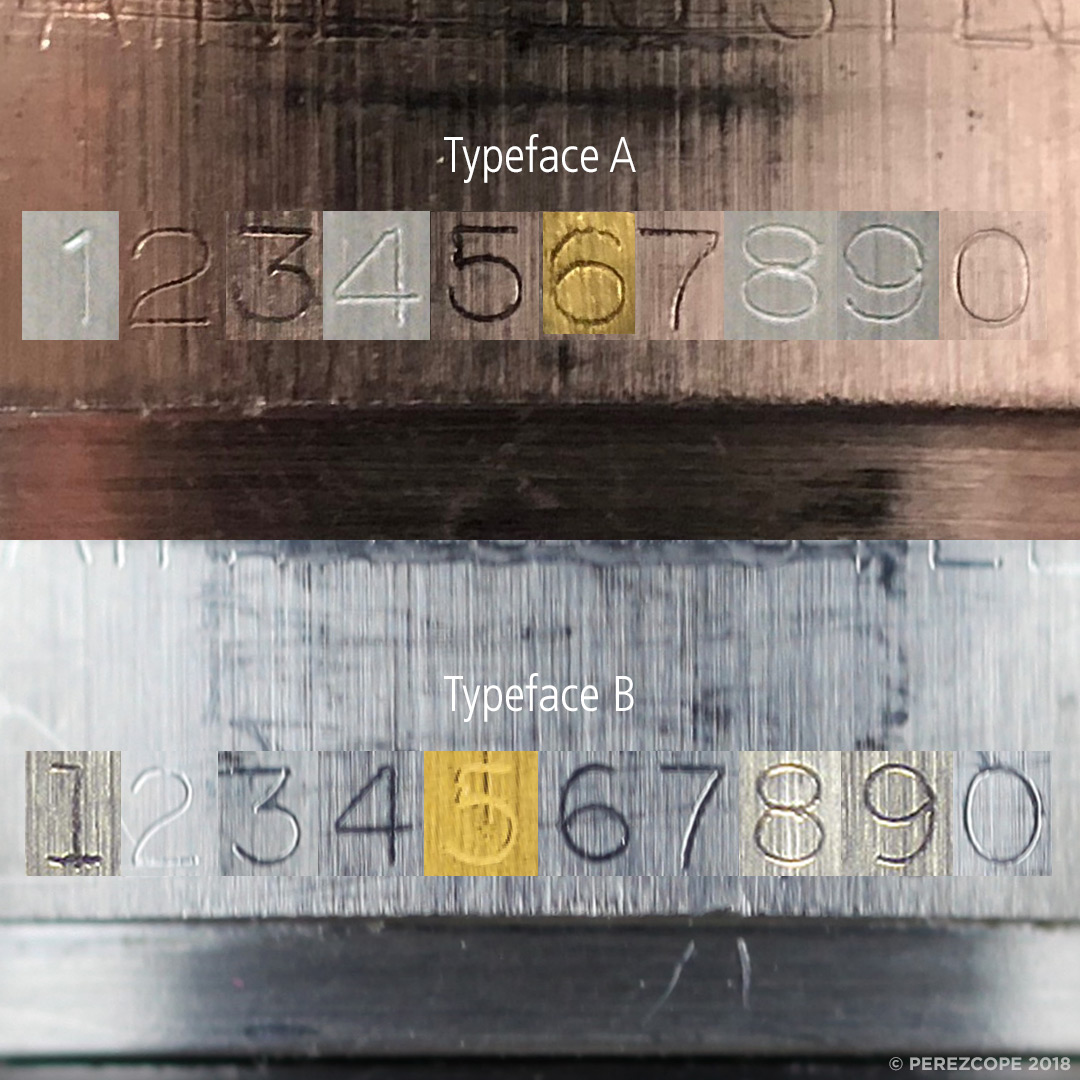

Crown: The 1675 used the “twinlock” crown that was 5.3 mm in diameter. It features the Rolex coronet with an underline underneath. The twinlock crown system has two rubber gaskets. One gasket is inside the crown and compresses against the threaded tube attached to the watch case. The other rubber gasket is located inside the watch tube and encompasses the winding stem. Together, they prevent water and dust from entering the case. While the gasket in the watch tube can prevent water and dust from entering the movement even while the crown is unscrewed, always screw down your crown. Source
Crown Guards: Crown guards are found on all 1675/1 (steel) and 1675/3 (two-tone) models. No crown guards (NCG) are seen on early 1675/8 (gold) examples before SN 1.36m.
1675/1 and 1675/3: Crown guards on 1675s with a steel mid-case are broken down into two general categories: pointed crown guards (PCG) and rounded crown guards (RCG). Early 1960s 1675/1s had PCG cases, while later 1675/1s and 1675/3s (which were not made in the 1960s) have RCG cases. There are actually two types of PCG types and the RCGs change shape slightly over the model run.
- El Cornino (PCG): Italian for ‘the horn,’ these are seen on early models, from the earliest OCC dials until around SN 1.0m. This crown guard type can be found on any chapter ring dial types as well as early non-chapter ring dials. They are notable for the extra facet on the side of the crown guards, which is an extra intricacy that can easily be lost with polishing.
- Broad (PCG): These appear to have been introduced around SN 874xxx and were seen until at least 114xxxx. The easiest way to see the difference on these is the lack of the extra facet on the side of the crown guards – also, for polished examples, notice how the lug chamfer starts in a different manner between El Cornino and broad PCGs.
- Note: The Type A and B non-chapter ring gilt dials always are cased with PCGs and can be seen with both PCG types. Early Type C dials are also seen with PCG’s, up to the SN noted above, and then with rounded crown guards.
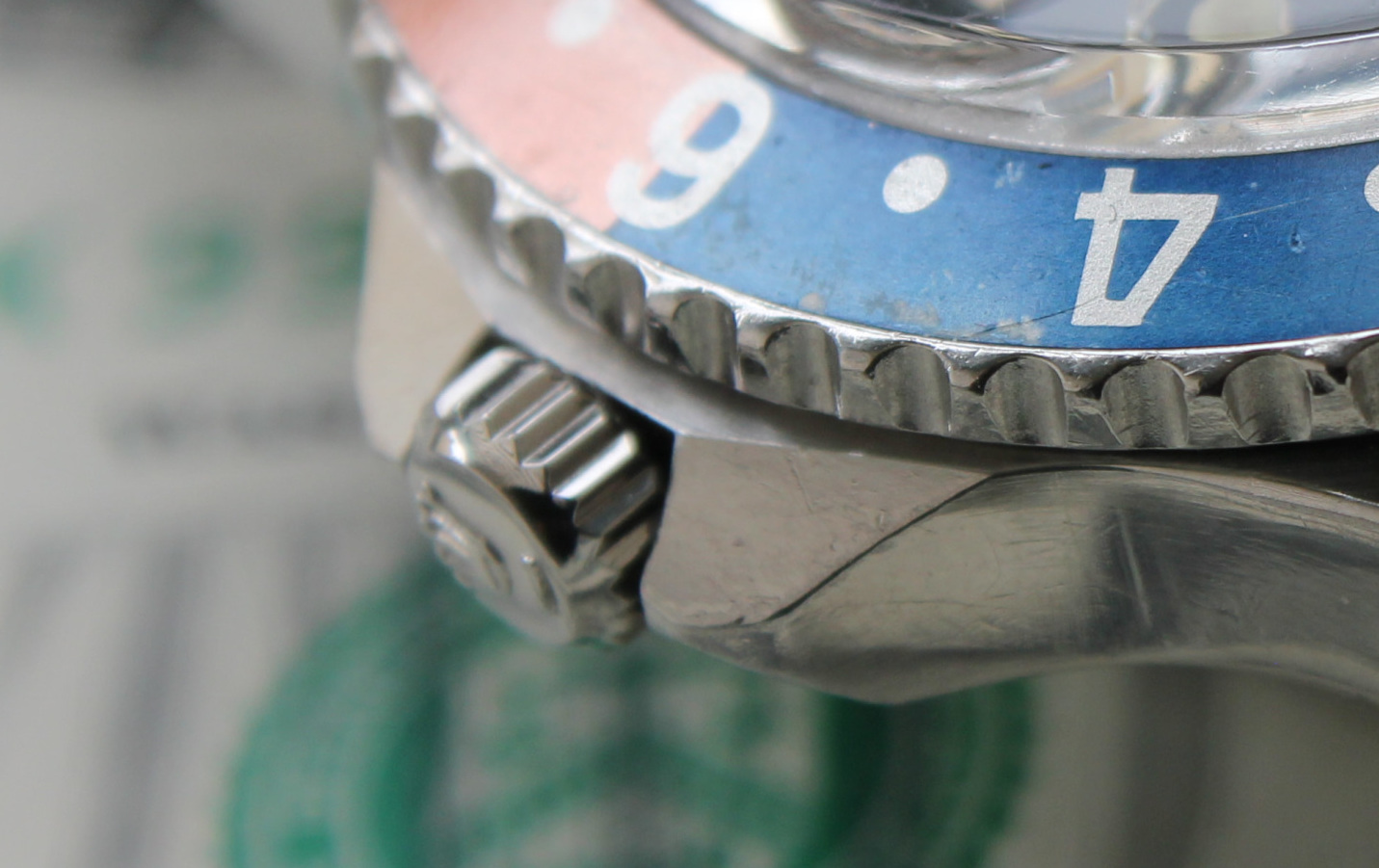

- Rounded (RCG): These crown guards began to appear around SN 1.1-1.2m and remain on Rolex sports watches through the present. While their evolution within the 1675 is subtle, there is a definite shift in shape from their introduction in the mid-1960s through the rest of 1970s. The early style in the 1960s has a long, flat top where the first facet to the side of the case is in line with the edge of the knurling on the crown. This facet moves closer to the case until, in the late 1970s, it starts right at the edge where the crown flushes to the case.


1675/8: The gold cased 1675s did not have PCGs. Instead, the early models were made without crown guards. This makes them appear similar to the 6542, though they retain the case dimensions of the 1675. Crown guards began appears on 1675/8s as early as 134xxxx and the NCG versions stopped being produced around 147xxxx. The crown guards on examples are more shaped and do not have the flat surfaces of the steel mid-cased 1675s.
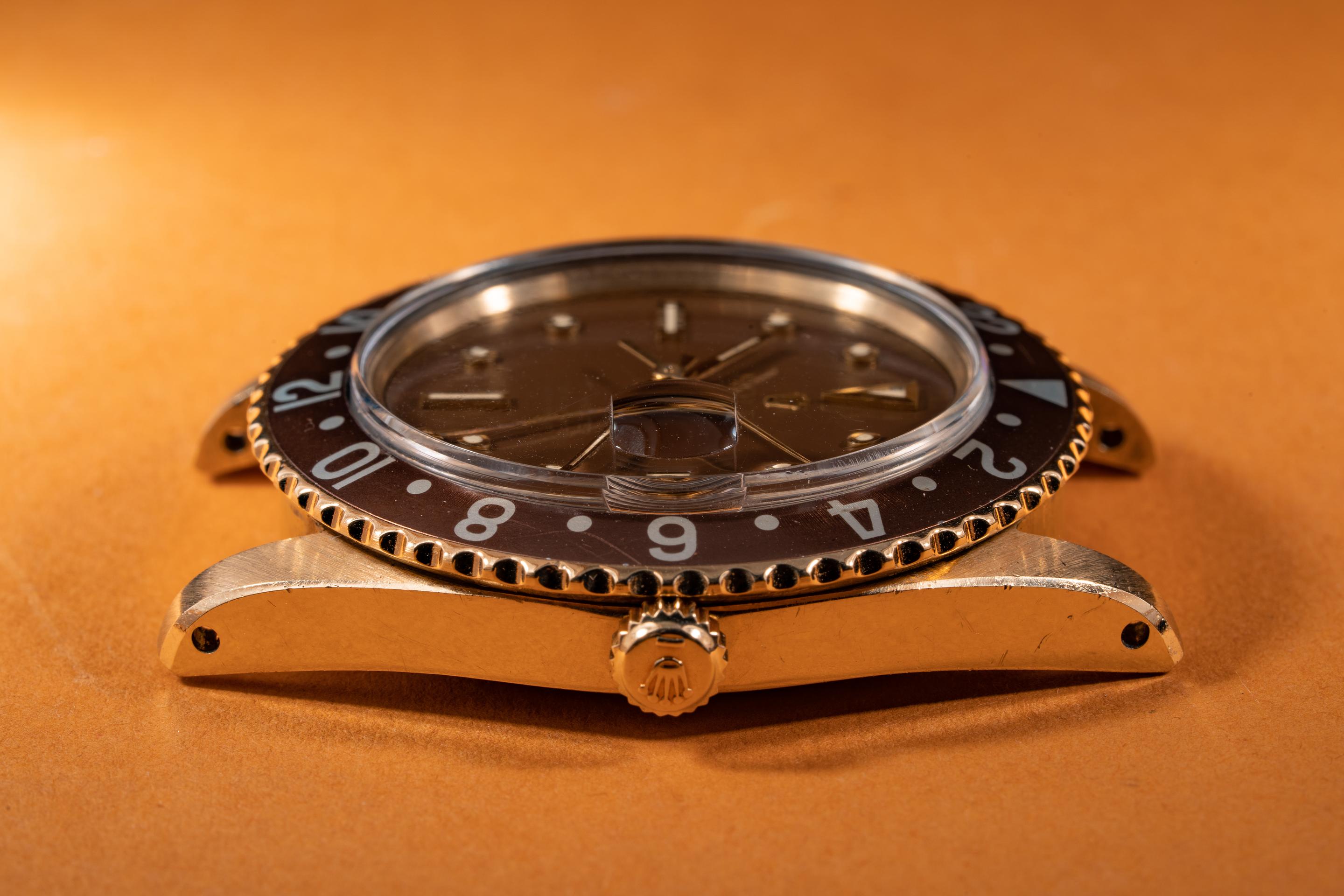

Crystal: All “crystals” for the 1675 are not in fact crystal but a plastic acrylic (“plexi”) covering.
- Standard (“Cyclops”): Designated part Tropic 116 (i.e., T116), these are fitted with a 2x magnifying window over the date wheel. Original crystals have a rounded edge around the top while service crystals have a large, beveled edge. Aftermarket cyclops crystals often lack the magnification of OEM crystals and do not fit flush.
- Dome: Designated part Tropic 38 (i.e., T38), these were thought to be a service part that could be added at the request of the owner. OEM versions are a sought after option. Source
Lugs: This is a very controversial area. There are more watches having material added and refinished, so it is very difficult to tell original examples from those that have been expertly redone. You need a loupe and a lot of experience to tell for sure, and it matters more than ever that you “buyer the seller.” Below are some examples to demonstrate original case shapes, however, I would be cautious in interpreting how nice a case is before seeing it up close. The first example (pictures 1-4) is worn but honest and the second is barely worn (pictures 4-8). Generally, examples from the early 1960s have more accentuated bevels that get wider near the end of the lug compared to the later matte dials, which generally have the a much more uniform width down the length of the chamfer.







